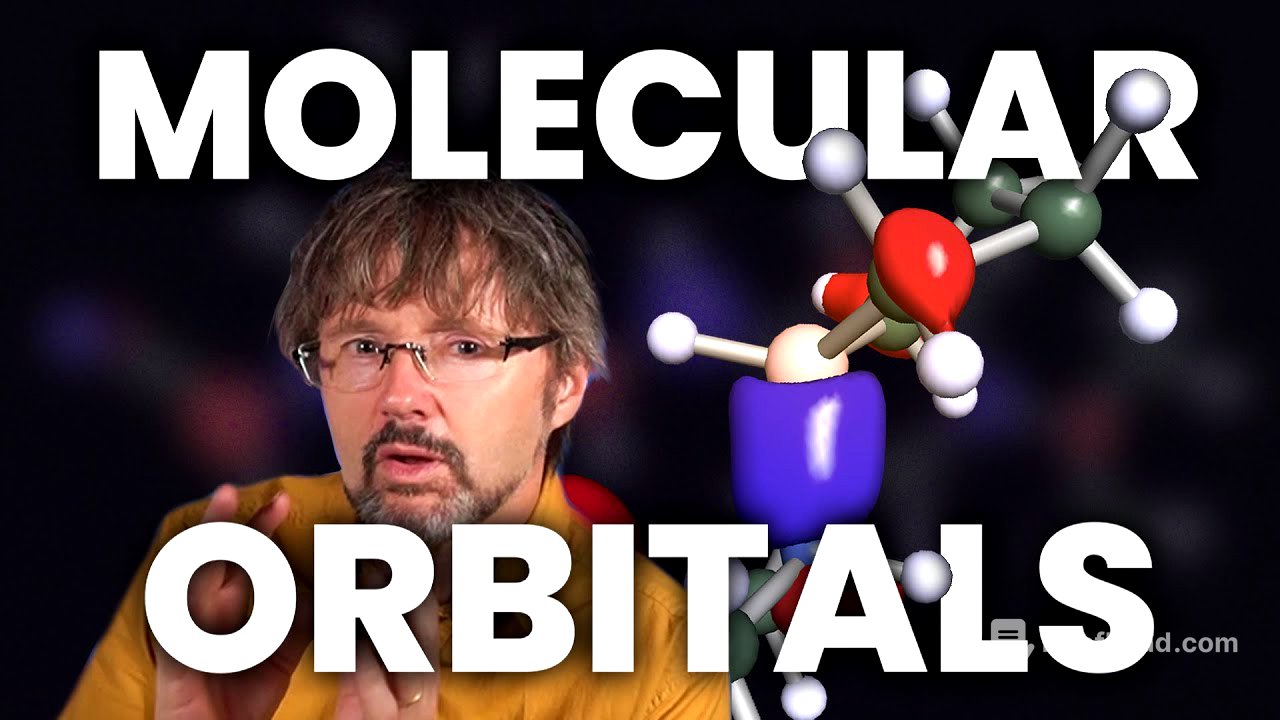TLDR;
This video introduces molecular orbital theory as an alternative to valence bond theory for explaining how atoms form molecules. It covers the basics of molecular orbital theory, including bonding and antibonding orbitals, and explains how it can be used to explain phenomena such as the paramagnetism of oxygen and the aromaticity of benzene. The video also discusses the limitations of molecular orbital theory and why valence bond theory is still used in many cases.
- Molecular orbital theory explains molecular bonding by combining atomic orbitals to form molecular orbitals that extend over the entire molecule.
- The theory introduces the concept of bonding and antibonding orbitals, which either stabilize or destabilize the molecule.
- Molecular orbital theory can explain phenomena that valence bond theory cannot, such as the paramagnetism of oxygen.
Introduction to Molecular Orbital Theory [0:00]
The video introduces molecular orbital theory as a more comprehensive explanation of how atoms form molecules, contrasting it with the simpler Lewis diagrams and valence bond theory taught in schools. While valence bond theory explains bonding through the overlap of atomic orbitals between adjacent atoms, molecular orbital theory posits that all atomic orbitals in a molecule combine to form larger orbitals extending over the entire molecule. This approach offers explanations for phenomena that valence bond theory struggles with, such as exceptions to the octet rule, aromaticity, and the bonding in oxygen gas.
Hydrogen Gas (H2) [3:09]
The video explains molecular orbital theory using the example of hydrogen gas (H2). In this model, the 1s orbitals of the two hydrogen atoms combine either in phase, creating a bonding orbital with high electron density between the nuclei, or out of phase, creating an antibonding orbital with a node between the nuclei and increased electron density outside the nuclei. The bonding orbital stabilizes the molecule, while the antibonding orbital destabilizes it. The video emphasizes that the number of molecular orbitals formed equals the number of atomic orbitals combined.
Helium (He2) [9:43]
The video uses helium (He2) to illustrate how molecular orbital theory explains why some atoms do not form stable molecules. Helium has four electrons that fill both the bonding and antibonding orbitals. The two electrons in the bonding orbital stabilize the molecule, while the two in the antibonding orbital destabilize it, resulting in no net benefit for the atoms to bond. However, the video mentions the existence of the helium hydride ion (HeH+), the first molecule in the universe, which can exist because it only has two electrons, occupying only the bonding orbital.
Dioxygen (O2) [11:04]
The video explains how molecular orbital theory accurately predicts that oxygen gas (O2) is a diradical with two unpaired electrons, unlike valence bond theory, which suggests a double bond with all electrons paired. This diradical nature makes oxygen slightly magnetic and gives it a faint blue color. The unpaired electrons reside in two antibonding orbitals of equal energy, each occupied by a single electron due to their repulsion.
Ozone (O3) [12:29]
The video uses ozone (O3) to illustrate how molecular orbitals extend over the entire molecule, forming bonding, antibonding, and non-bonding orbitals. Bonding orbitals, like the tube-shaped one, have high electron density between atoms, while antibonding orbitals have nodes between atoms, indicating low electron density. Non-bonding orbitals have little impact on bonding, with electron density concentrated above and below the atoms. The video emphasizes that each molecular orbital, regardless of its shape, can hold only two electrons.
Cyclohexane and Benzene [14:41]
The video transitions to more complex molecules like cyclohexane and benzene to further illustrate molecular orbital theory. Benzene, unlike what valence bond theory suggests, is far more stable than expected, doesn't undergo typical double bond chemistry, and has equal bond lengths. This phenomenon, called aromaticity, is better explained by molecular orbital theory, where all electrons in aromatic molecules reside in bonding orbitals, while non-aromatic molecules also populate antibonding orbitals.
Frontier Orbitals: HOMO and LUMO [17:35]
The video introduces the concept of frontier orbitals, specifically the highest occupied molecular orbital (HOMO) and the lowest unoccupied molecular orbital (LUMO). Chemists focus on these orbitals because they dictate where chemical reactions are most likely to occur. Electrons from the HOMO of one molecule can be injected into the LUMO of another to form a new chemical bond, as seen in Lewis acid-base reactions. The energy difference between the HOMO and LUMO also determines the amount of energy needed to excite an electron, which is crucial in applications like organic LEDs.
Usefulness vs. Accuracy [21:32]
The video addresses why simpler models like Lewis diagrams and valence bond theory are still taught despite the accuracy of molecular orbital theory. The reason is the trade-off between usefulness and accuracy. Simpler models are sufficient for basic understanding and can be applied mentally, while molecular orbital theory requires computational tools for complex molecules. Valence bond theory also allows for visual imagination, which is valuable in chemistry. Different approaches have advantages and disadvantages, so the best tool is used for the specific job.
Bonus Extras [24:04]
The video concludes with bonus content, emphasizing that models are simplifications of reality. It's impossible to clearly imagine atoms and electrons, so models are used to represent them, each with flaws. The best model is chosen based on the purpose. The video also clarifies that orbitals represent the combination of the wave and particle nature of electrons, and the concept of electrons as particles in oscillating spaces is a useful model for chemistry.









